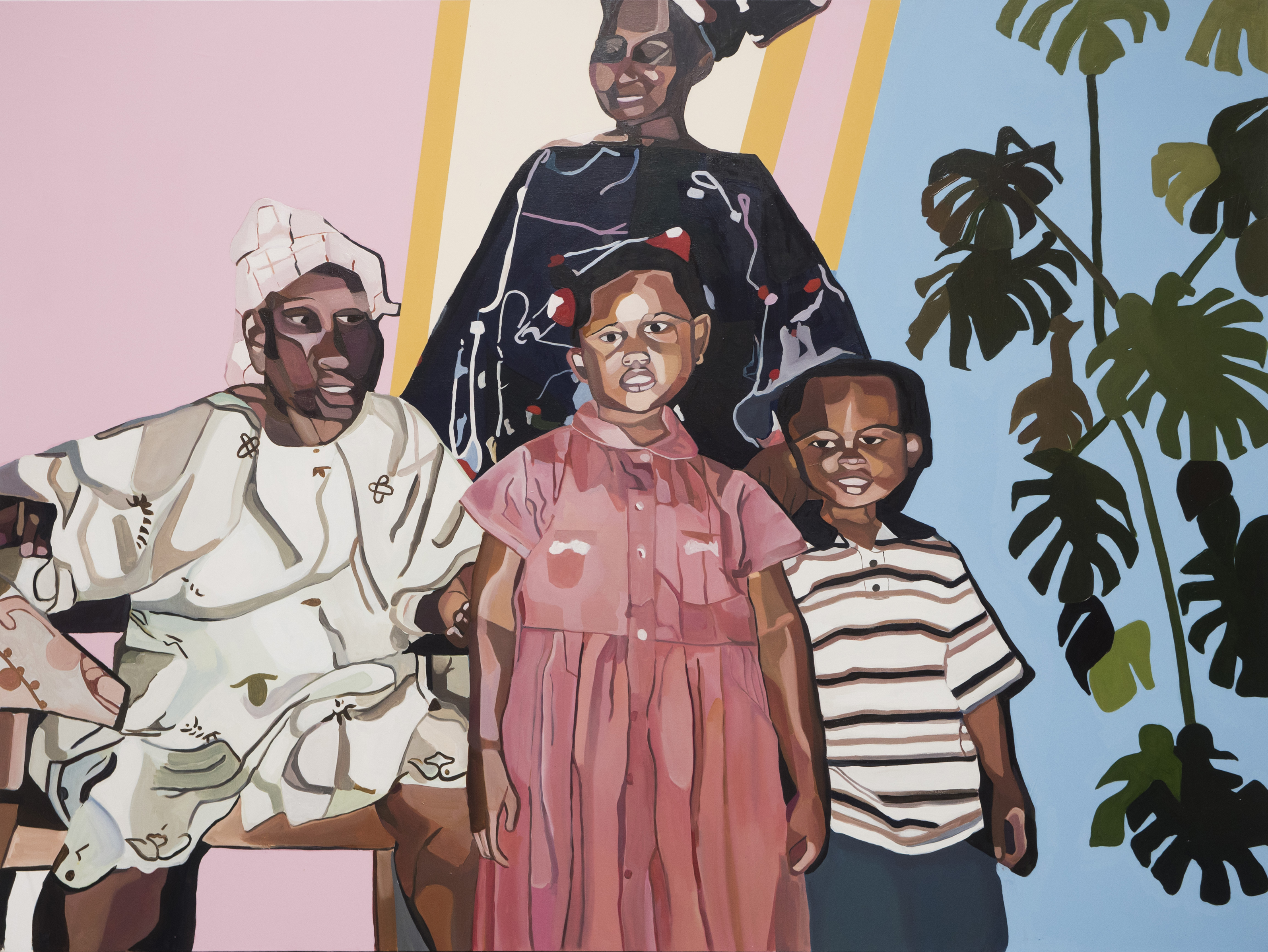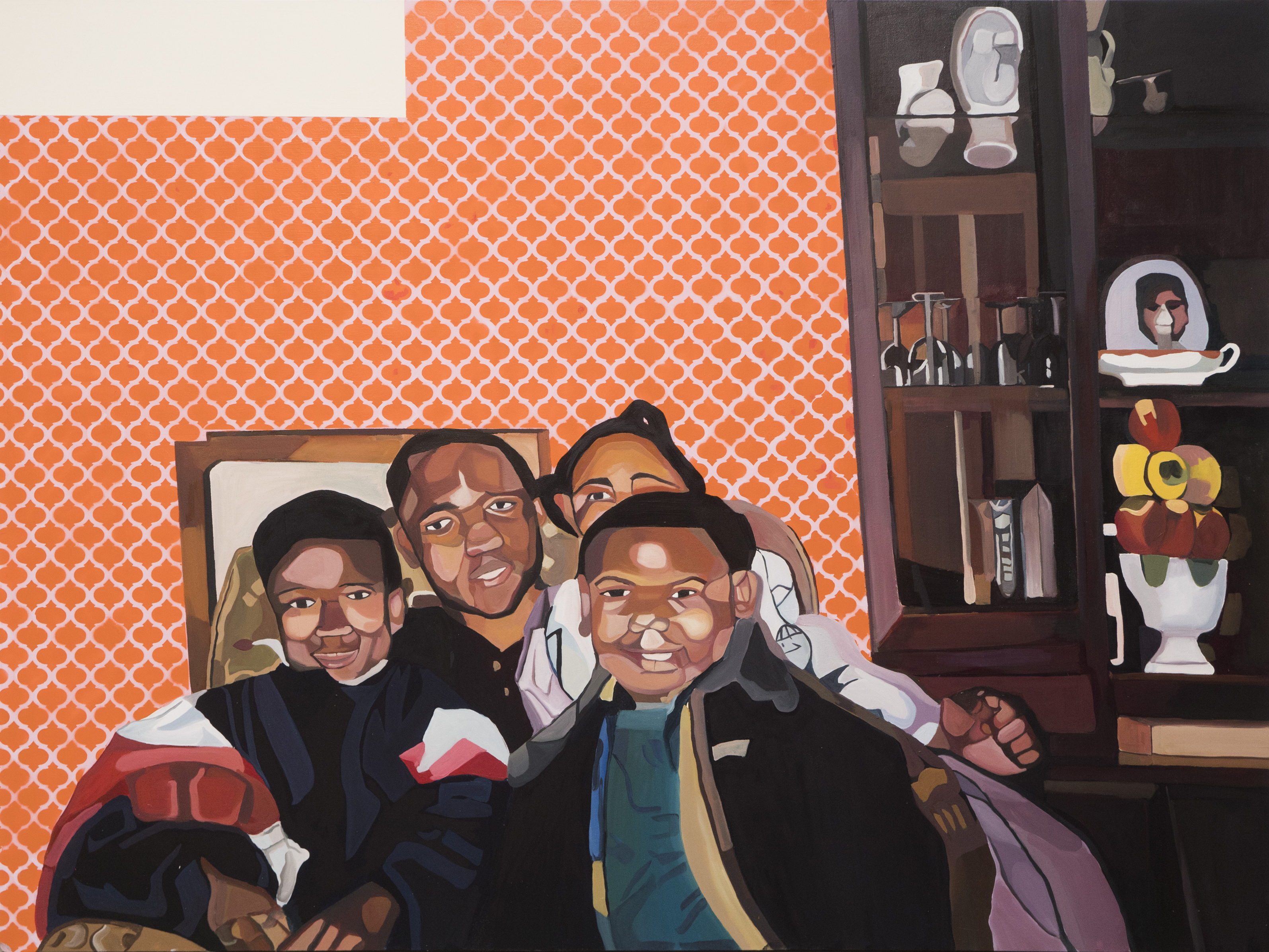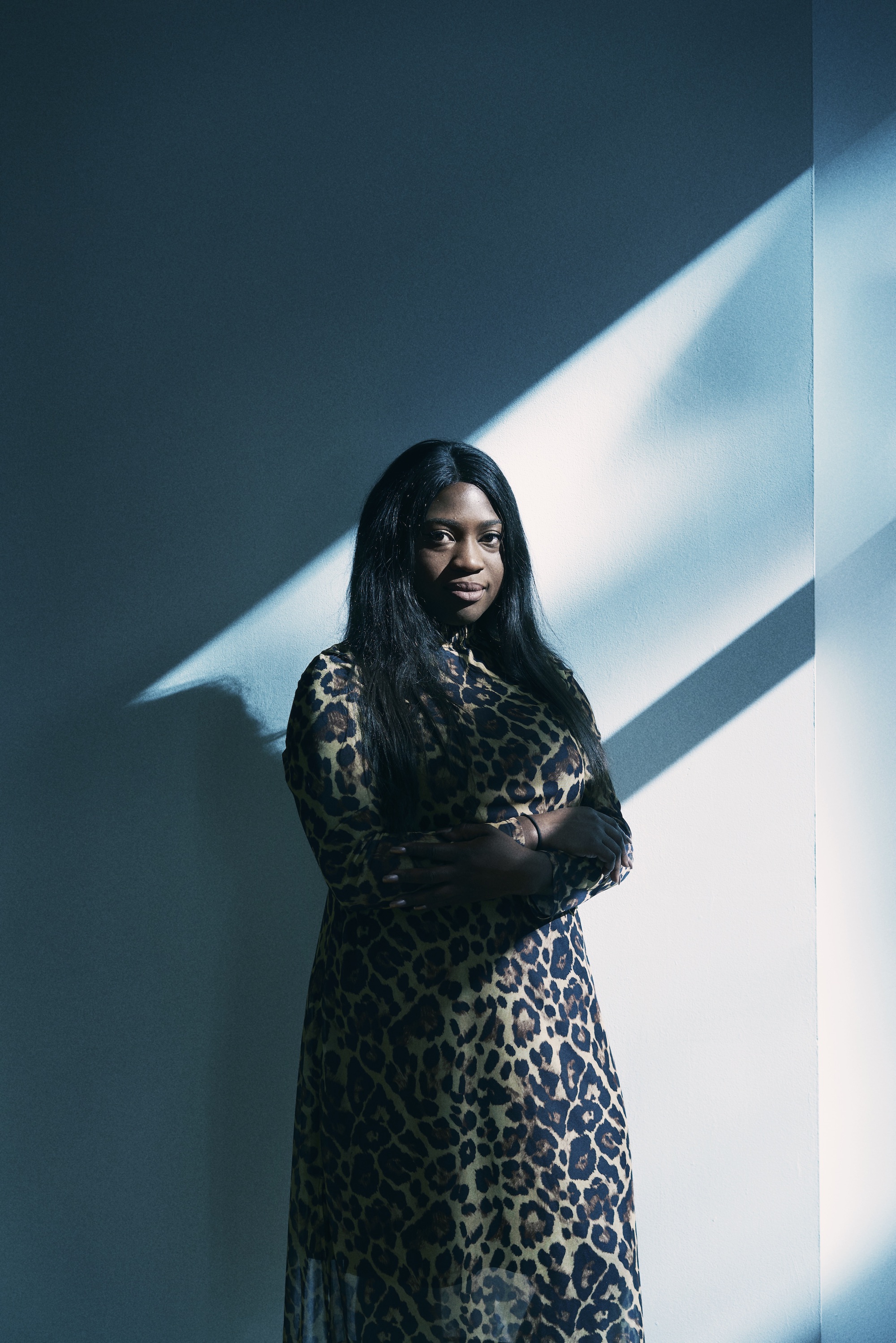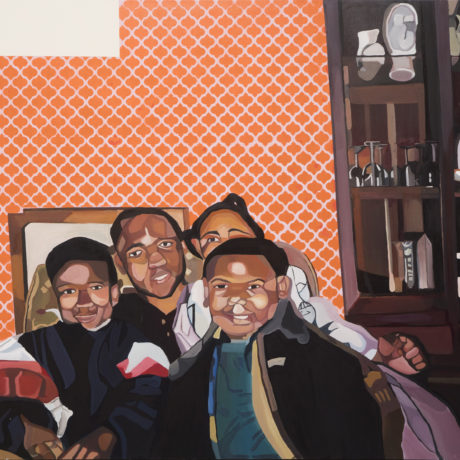
Joy Labinjo‘s large scale paintings draw upon her British-Nigerian heritage, featuring her family in relaxed scenes based upon old, mostly forgotten photos. Portrayals of apparently close-knit relationships, the paintings seem somehow familiar to us as it evokes the ubiquitous family image, while exploring concepts of belonging, memory and identity. A talented and unique creator, Labinjo portrays under-represented groups in new spaces, telling the stories that mainstream UK society still needs to hear.
Just two years out of art school, she has already won the Woon Art Prize and opened two solo shows at Tiwani Contemporary and Bloc Projects, Sheffield, as well as being featured in a number of group shows. Her first major institutional solo presentation is on display at BALTIC Gateshead until 23 February 2020.

How autobiographical are the family scenes that you paint?
My paintings are not really autobiographical, and the photographs that I work from are just a starting point. I work from photographs found in photo albums that we have at home, but a lot of them are before my time and I don’t recognize everyone in them. They’re of my parents when they were younger and their friends, just chilling on sofas. My parents were born in the UK but grew up in Nigeria, which is very common for that generation. So they’re British but also very Nigerian. It’s a strongly mixed identity.
I think they had forgotten that these photographs exist. My mum would recall details of the house they were living in at the time, saying things like, “We hated that wallpaper!” For me it was more about the compositions and the colours. And whilst I know this is my family, people have said that the paintings remind them of their families and their own family photo arrangements. It’s important to me that they are relatable.
You grew up on the edges of London, which is such a multicultural city. How did this shape your feelings of belonging within it?
Growing up I always felt like I belonged, until I went to university in Newcastle. I always knew I was black, but it wasn’t really something that played on my mind. It was very multicultural and accepting; I never felt different. Then I went up to Newcastle and became very aware of just how different I was. Race wasn’t really discussed when I was growing up. That’s the great thing about London, it’s so diverse.

“I first started this body of work because I wanted to show black people in different kinds of spaces”
What has been your experience of working as a black female artist since then?
Studying in Newcastle, I think there was just one other person of colour who was two years above me. Apart from that it was very white, and the city is very white. I was trying to find a voice within that, and I fought so hard to not be a black artist. I just wanted to be an artist, and I was looking at quite traditional painters like Lucian Freud and Jenny Saville. I didn’t want to draw any extra attention to myself. Then I did my dissertation on the black British artists of the 1980s, like Lubaina Himid and Sonia Boyce, and I realized that there were others who had been dealing with the same issues as me before.
I thought about how I could weave that in, and it was very instinctive from there. I went home, picked up a family album and started painting from these images. I finally felt at ease. I realized that it was okay to include your own identity and your own experiences. I felt strongly that I wanted to tell a different story to the one that is usually portrayed.
Colour and shape is very important in your work. How do you work with colours to achieve the results you are looking for, and what significance do they have?
I use household paint for the bright colours, which is usually for decorating and painting walls. It’s just instinctive, and I’m still figuring out what works. Some colours come from the photographs, and others I add myself and play around. It’s all a bit of trial and error. I started using household paint partly for financial reasons—and I just thought, why would I spend all that time mixing paint for such a large area? This allows me to work quicker, and I like how vibrant it is.

“People have said that the paintings remind them of their families and their own family photo arrangements”
Why do you work at such a large scale?
Working on a large scale gives me so much energy. I usually work on more than one at a time, and it’s quite fun to flip between them. I am doing some smaller ones at the moment, but I actually find them more difficult. It’s more about precision and keeping to the lines on a small scale, and I feel a lot freer on a larger scale.
Clothing is also important in your paintings, connecting to traditional dress and broader cultural histories, while remaining firmly rooted in the present. What does it represent for you in your work?
The clothes are really important. I first started this body of work because I wanted to show black people in different kinds of spaces. Sometimes they’re in traditional wear, and the women are wearing a “gele“, which is a big head wrap. It’s mainly for parties, weddings, even funerals—big occasions. Other times they’re just in jeans and a shirt. It’s a way of showing that we exist in different places.






